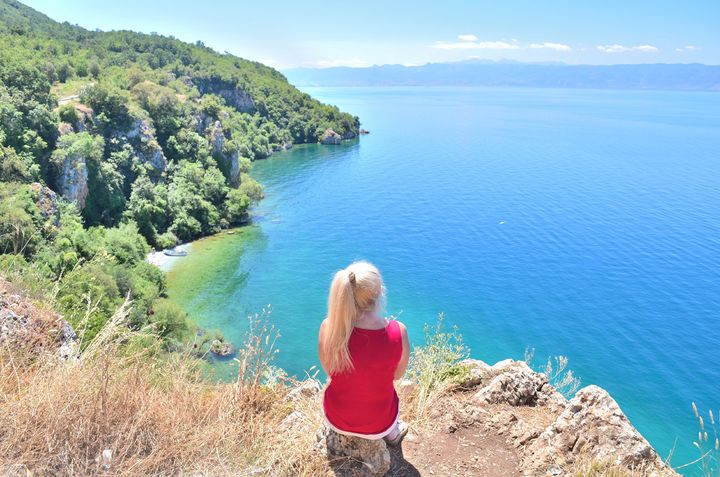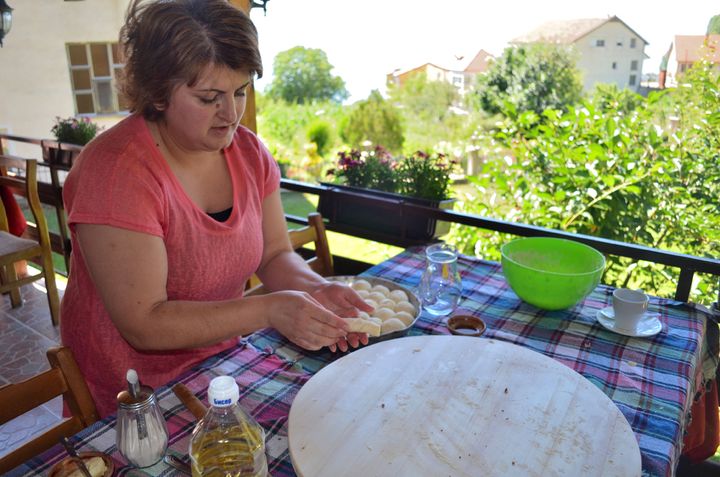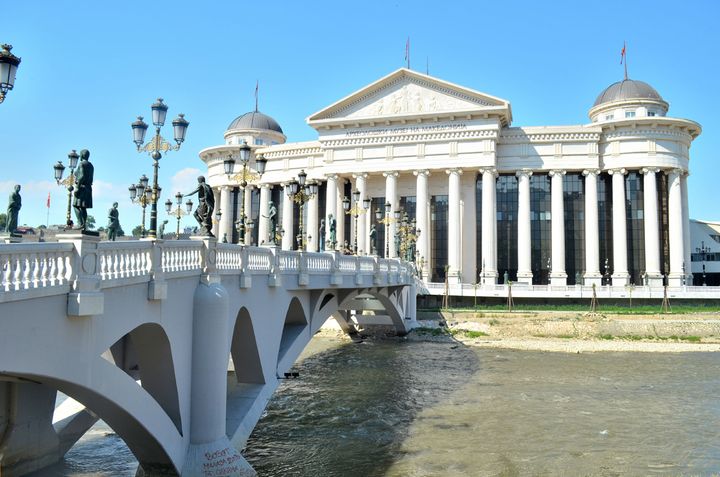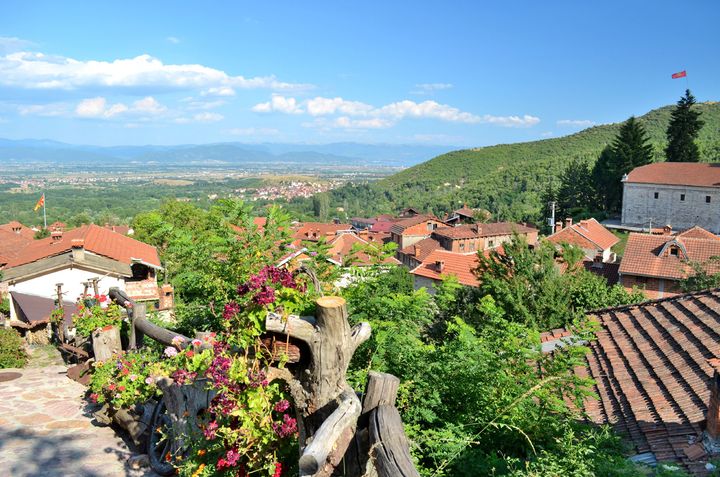
If you are looking for a European destination that is scenic and affordable, quirky but friendly, has beaches, mountains, and vineyards….then look no further than Macedonia.
One of the Balkan Peninsula’s landlocked countries in Southeastern Europe, the Republic Macedonia was once part of the former Yugoslavia but became independent in 1991. The country has over fifty lakes, and sixteen mountains higher than 6,562 feet.
Macedonia is not without its controversy. Alexander the Great has riveted the attention and fervor of the Macedonians who claim this larger-than-life personality as their national hero – to the utter dismay of neighboring Greece who’ve long held that he’s theirs. Alexander, the ruler of the ancient kingdom of Macedonia, was born in the city of Pella, located in present-day Greece, but Macedonians insist that Greece stole the conqueror’s legacy from Macedonia, not the other way around.
The Greeks also dispute use of the name “Macedonia,” laying claim to that name as an official providence in Greece Macedonians have been forced to use either constitutional name Republic of Macedonia, or YROM (Former Yugoslav Republic of Macedonia) – a name which they do not like because it calls to mind former unpleasant communist rule.
1. Culture and History

Macedonia has more monasteries, convents and churches than any other place in the Balkans. According to some estimates, there are approximately 155 preserved monasteries and 90 more in ruins or disrepair.
St. Naum, a Byzantine monastery perched high on a rocky outcropping overlooking Lake Ohrid, was built by the monk of the same name. His stone coffin is housed in its own chamber, open to visitors, many of which have claimed over the years to hear the saint’s heartbeat, more than 1000 years after his death, by pressing an ear to the tomb. Others claim it is nothing more than the echo of an underground spring.
Amid the spectacular scenery are colorful peacocks strutting around the monastery grounds and tourist area below, which includes a beach, walkway, gardens, and several eateries with scenic views.
2. The Natural Beauty

The terrain is mostly rugged with scenic mountains, deep basins and valleys, with nowhere exemplified more than in the Matka Canyon. The canyon is a popular outdoor attraction for nature enthusiasts, alpine hikers, kayakers, climbers, and cave explorers. There are ten caves and two vertical pits in the canyon.
A paved walkway on the side of the mountain leads visitors past the dam to an area where they can rent a boat to explore further down the canyon lake. The boat usually takes guests to a 3000-year old cave, which has been preserved. There are steps leading down to the highlight, a smaller cave with small natural spring inside.
The scenery along the paved path, through the lake, and outside the cave is magnificent.
3. The Beach

Macedonia does not have an ocean coastline, but Lake Ohrid, a UNESCO World Heritage Site is the most popular tourist destination in the country. Ohrid is considered to be one of the oldest lakes and biotopes in the world. The brilliant green water set in front of a hillside of historic red-tile roofed homes and the ubiquitous fortress make it one of the most photographed sites in the country. Behind the lakefront boardwalk is a labyrinth of shops, cafés, bars and restaurants, always festive with live music and performers.
A walking path leads to the Orthodox Church of Saint John at Kaneo situated on the cliff over Kaneo Beach with panoramic views overlooking Lake Ohrid. The church, dedicated to John the Apostle is circa 13 century.
4. The Wine

Macedonia has three wine-growing regions: Povardarie, in the valley of the Vardar River, Pčinja-Osogovo, to the east on the border with Bulgaria, and Pelagonija-Polog near Lake Ohrid, near the border with Albania. Archeologists have discovered Macedonia’s wine tradition dating to the 13 century B.C.
The Popova Kula Winery and vineyards are located on the south slopes of the Grand Hill, a location and climate conducive for grape growing. One of their signature wines, Stanushina, is an established grape variety with a unique flavor and found only in the Tikveshija region of Macedonia. The introduction of international grapes led to the great reduction of production and availability of this wine, and currently Popova Kula is the only producer in the world of this variety.
5. The Food

Macedonian cuisine reflects Mediterranean and Middle Eastern influences such as grilled meats, especially lamb. But it is also known for its delicious pastries. One place to experience the pastries – from beginning to end – is at Risto’s Guest House. Located just outside of Ohrid, Risto’s is in a small hillside village with stunning views. Whether visitors chose to stay overnight or not, not to be missed is the personal cooking class with owner and chef, Anita. Barely five feet tall, this female dynamo assures that the class, part of which is outdoors on the balcony overlooking the valley, is filled with delicious aromas and vibrant fun. Guests can try their hand at making Macedonia’s traditional savory pie filled with cheese as well as making kifli – a flaky croissant made from yeast. The flaky rolls are either filled with chocolate and sprinkled with confectioner’s sugar or with ham and tossed in sesame seeds.
6. The Capital

Most who have visited Skopje, the Capital of the Republic of Macedonia would agree that it’s perhaps the most quirky city in Europe. Located on the Vardar River and now boasting a population over 500,000, a massive government-funded building and remodeling is taking place in the once shabby city in an effort to attract more tourists. Their efforts include new buildings designed to look like some of its historical or Ottoman buildings, but the result has left somewhat of a theme park atmosphere.
The city square is flanked by a statue of Philip II at one end of the bridge to a 72-foot-tall marble colossus of Alexander astride his warhorse dominating the skyline at the other end. Additional statues have been popping up around the square, usually unannounced.
The eccentric but amusing city square is juxtaposed next to the Old Bazaar. During Ottoman rule of Skopje, the Old Bazaar was the city’s main center of commerce. The bazaar is a crisscross of shops selling everything from Persian carpets to traditional handcrafts to ladies formal wear, and cafés and restaurants alongside historical mosques and Turkish baths.
Other sites include the Stone Bride, Mother Theresa’s birthplace memorial, the Clock Tower, and Mustafa Pasha Mosque.
The love-it or hate-it city has a cult following who revel in the multi-cultural, flamboyant vibe.
7. The Views

In a continent of countries jammed with tourists, Macedonia is one of just a few undiscovered gems. From the grandeur of the mountains and canyons overlooking the splendor of rivers and lakes or idyllic hillside village, everywhere you look there is a feast for your senses.
Disclosure: The author was honored to be the guest of JayWay Travel during her stay in Macedonia, but as always, the opinions, reviews and experiences are her own.
